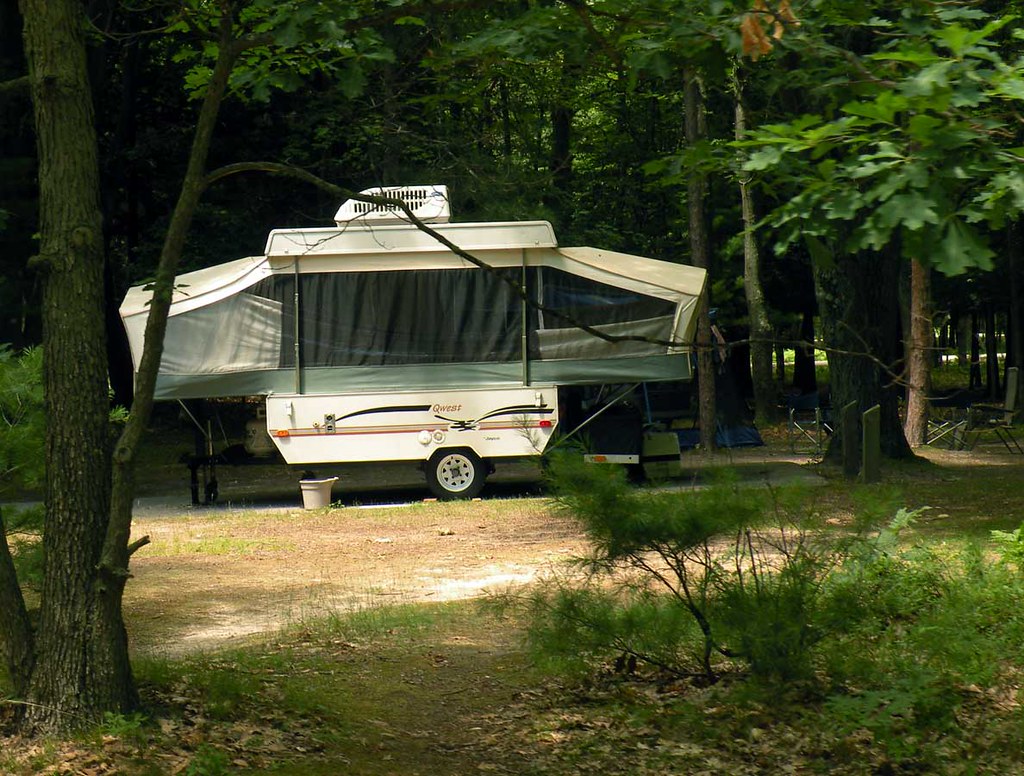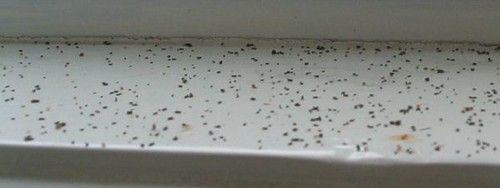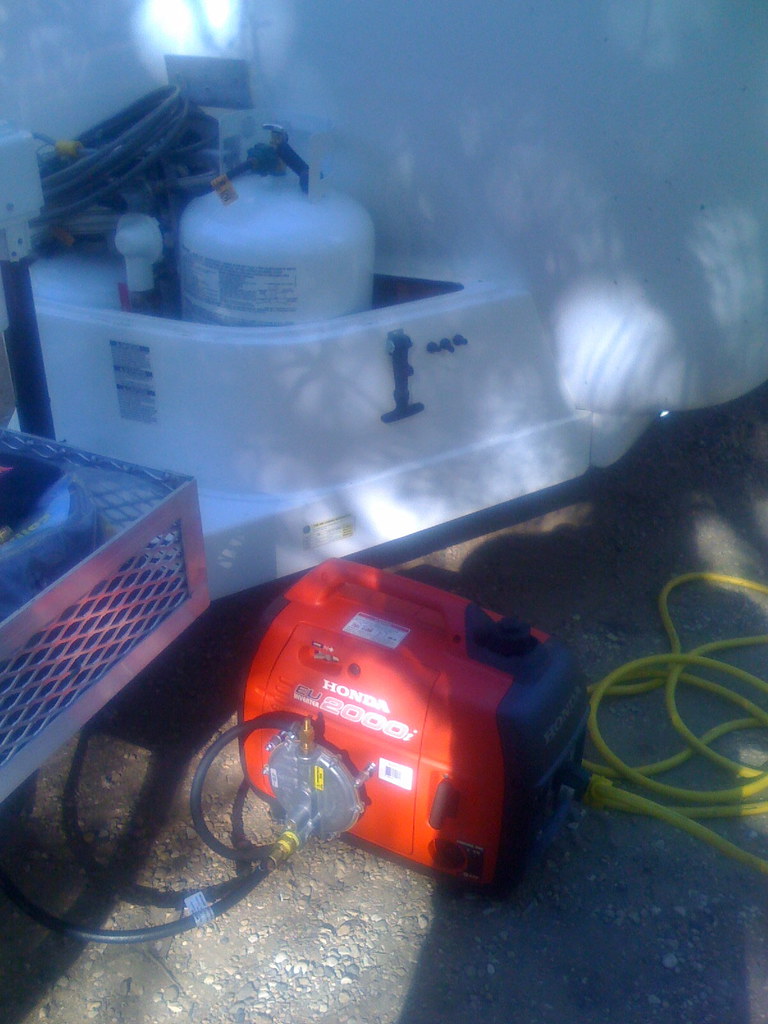
Winterizing Pop Up Campers: A Comprehensive Guide
We may earn money or products from the companies mentioned in this post.
Winterizing pop up campers is an essential step in ensuring your RV is ready to go when spring rolls back around. Without proper winterization, your camper’s water system can freeze and potentially cause costly damage. Winterizing your pop-up camper can be a little bit easier than winterizing a travel trailer or motor home, but it’s every bit as important.

To winterize your pop-up camper, you’ll need to follow a checklist of steps to properly prepare your camper for the colder months. These steps may include draining the holding tanks, clearing the water lines, adding antifreeze, and removing anything that could freeze or grow mold and mildew.
Additionally, you may need to clean the rig inside and out and store it in a location where it isn’t exposed to the elements.
Winterizing your pop-up camper is a critical step in protecting your investment and ensuring that it’s ready to go when warmer weather returns. By following a few simple steps, you can properly winterize your camper and avoid costly damage caused by freezing water.
Understanding Pop Up Campers
Pop up campers, also known as tent trailers, are a popular choice for camping enthusiasts who want to enjoy the great outdoors without sacrificing comfort. These campers are lightweight and easy to tow, making them a great option for those who don’t want to invest in a large RV or motorhome.
Pop up campers are designed to be compact and efficient, with a collapsible top that allows for easy storage and transportation. When parked, the top can be raised to provide additional headroom and sleeping space. The walls of the camper are made of canvas or other lightweight materials, which can be rolled up or down to provide ventilation and privacy.
One of the main advantages of pop up campers is their versatility. They can be used for a wide range of activities, from weekend camping trips to extended road trips. They are also great for families with children, as they provide a comfortable and safe place to sleep without taking up too much space.
When it comes to winterizing a pop up camper, there are a few things to keep in mind. Because these campers are designed for warm weather use, they may not be suitable for use in extreme cold temperatures. However, with proper preparation and maintenance, they can be used in colder weather with minimal risk of damage.
Pop up campers are a great option for those who want to enjoy the great outdoors without sacrificing comfort or convenience. With their lightweight design, versatility, and ease of use, they are a popular choice for camping enthusiasts of all ages and experience levels.
Importance of Winterizing Your Pop Up Camper
Winterizing your pop up camper is an essential process to protect it from damage during the cold months. Water expands when it freezes, and if there is any water left in the plumbing system, it can cause the pipes to burst. This can lead to costly repairs, and in some cases, irreparable damage to the camper.
To prevent this from happening, it is crucial to winterize your pop up camper properly. This involves draining all the water from the plumbing system, including the fresh water tank, supply lines, and pump. You should also add antifreeze to the plumbing system to ensure that any remaining water does not freeze.

In addition to protecting the plumbing system, winterizing your pop up camper can also help to prevent mold and mildew growth. Moisture can build up in the camper during the winter months, and if left unchecked, it can lead to mold and mildew growth. This can cause health problems, as well as damage to the camper’s interior.
To prevent this from happening, it is essential to thoroughly clean and dry the camper before winterizing it. This includes removing all food, bedding, and other items that can attract moisture. You should also open all vents and windows to allow for air circulation and prevent moisture buildup.
Winterizing your pop up camper is a crucial step in protecting your investment and ensuring that it is ready for use when the warmer weather returns. By following the proper steps and taking the time to prepare your camper for the winter months, you can avoid costly repairs and keep your camper in top condition for years to come.
Pre-Winter Inspection
Before winterizing your pop up camper, it’s important to perform a thorough inspection to identify any potential issues that may require attention. This will ensure that your camper is in good condition and ready for winter storage.
Exterior Inspection
Start by inspecting the exterior of your pop up camper. Look for any signs of damage or wear and tear, such as cracks in the roof or sidewalls, dents in the exterior, or rust on the frame. Check the seals around windows, doors, and other openings to make sure they are intact and not allowing water or air to leak in.
If you find any damage, it’s important to address it before winterizing your camper. Repairing any issues now will prevent them from getting worse over the winter and save you time and money in the long run.
Interior Inspection
Next, inspect the interior of your pop up camper. Check for any signs of water damage, such as stains on the ceiling or walls, musty odors, or soft spots in the floor. Look for any signs of pests, such as droppings or chewed materials.
Inspect the furniture, appliances, and other components to make sure they are in good working condition. Check that all drawers and cabinets are securely latched and that nothing is loose or rattling.
Mechanical Systems Check
Finally, check the mechanical systems of your pop up camper. Test the battery to make sure it is fully charged and in good condition. Check the tires for wear and proper inflation. Inspect the brakes and wheel bearings to make sure they are working properly.

Check the propane system for leaks and make sure all appliances are turned off. Drain the water system and add antifreeze to prevent freezing and damage to pipes and fittings.
Performing a pre-winter inspection of your pop up camper will help ensure that it will be in good condition when you’re ready to use it again next season. By identifying and addressing any issues now, you can avoid costly repairs and enjoy worry-free camping in the future.
Draining and Cleaning the Water System
The first step to winterizing your pop up camper is to drain and clean the water system. This is necessary to prevent any leftover water from freezing and causing damage to the pipes and tanks. Here are the steps to drain and clean the water system:
- Turn off the main water supply valve or switch located inside or outside your pop-up camper.
- Open all the faucets, showerheads, and taps inside the camper to let all the water drain out.
- Drain the hot water heater by turning off the propane or electric power, waiting for it to cool down, and then opening the drain valve.
- Remove the drain plug and open the pressure relief valve on the water heater to allow all the water to drain out.
- Drain the fresh water tank and the gray and black water holding tanks by opening the valves or using the dump station.
- Flush out the tanks with clean water to remove any remaining debris or sediment.
- Add a cleaning solution to the fresh water tank and run it through the pipes and faucets to sanitize the system.
- Let the solution sit for the recommended time, then drain it out and flush the system with clean water again.
By following these steps, you can ensure that your pop up camper’s water system is properly drained and sanitized before winter storage. It’s important to note that antifreeze should not be added until after the water system has been drained and cleaned.
Protecting the Interior
When winterizing your pop up camper, it’s important to take steps to protect the interior from damage. This section will cover three key areas of interior protection: cleaning and drying, pest prevention, and temperature control.
Cleaning and Drying
Before storing your pop up camper for the winter, it’s important to thoroughly clean and dry the interior. Any moisture left behind can lead to mold and mildew growth, which can cause serious damage to your camper’s interior.
Start by removing all cushions, bedding, and other soft furnishings. Wash and dry these items according to their care instructions. Then, use a mild cleaner and warm water to clean all hard surfaces, including countertops, floors, and walls. Be sure to dry everything thoroughly before moving on to the next step.
Pest Prevention
When you’re not using your pop up camper, it can be a tempting target for pests like mice and insects. To prevent these unwanted guests from making themselves at home, take steps to seal up your camper and make it less attractive to pests.

Start by sealing any gaps or cracks in your camper’s exterior with caulk or weatherstripping. Then, remove any food or crumbs from the interior and store all food items in airtight containers. Finally, consider using pest repellents like mouse traps or insect repellent sachets to keep pests at bay.
Temperature Control
During the winter months, it’s important to maintain a consistent temperature inside your pop up camper to prevent damage from freezing temperatures. To do this, consider using insulation to keep the interior warm and dry.
One effective way to insulate your pop up camper is by using bunk end covers like Pop Up Gizmos. These covers help reflect sunlight and keep the interior cool in the summer, while also providing insulation during the winter months.
By taking these steps to protect the interior of your pop up camper, you can ensure that it stays in great condition throughout the winter months and beyond.
Covering and Storing Your Camper
When winter comes, it’s important to properly store your pop-up camper to protect it from the harsh elements. Covering your camper is an essential part of winterizing it. Here are some things to consider when choosing a cover and a storage location.
Choosing a Cover
When choosing a cover for your pop-up camper, you want to make sure it is the right size and material. A cover that is too small will not provide adequate protection, while a cover that is too large will be difficult to secure properly. Look for a cover that is specifically designed for pop-up campers and is made of a durable, waterproof material. Some covers even come with built-in vents to prevent moisture buildup.
Choosing a Storage Location
Choosing the right storage location for your pop-up camper is just as important as choosing the right cover. If possible, store your camper indoors to protect it from the elements. Indoor storage units are available for rent and can be a great option if you have the budget for it. If indoor storage is not an option, look for a storage facility that offers covered or outdoor storage.
When storing your pop-up camper, make sure it is parked on a level surface and the wheels are chocked to prevent it from rolling. If you are parking your camper on the ground, make sure you prop the wheels on blocks to prevent them from sinking into the soil. Cover the camper with the chosen cover and secure it tightly to prevent it from blowing off during strong winds.
By choosing the right cover and storage location, you can ensure that your pop-up camper is protected from the elements during the winter months.
Post-Winter Inspection
After a long winter, it is important to inspect your pop up camper before using it again. Here are some key areas to check:
Exterior
Check the exterior of your camper for any damage that may have occurred over the winter. Look for cracks in the roof, tears in the canvas, and any other signs of wear and tear. Check the tires for wear and proper inflation. Inspect the hitch and make sure it is secure and in good condition.
Interior
Check the interior of your camper for any signs of water damage, mold, or mildew. Open all the windows and doors to air out the camper and check for any musty smells. Check the cushions and bedding for any signs of damage or wear. Check the appliances to make sure they are in good working order.
Plumbing
Check the plumbing system for any leaks or damage. Turn on the water pump and check all the faucets and connections for leaks. Check the water heater and make sure it is working properly. If you used antifreeze in the plumbing system, make sure to flush it out before using the camper.
Electrical
Check the electrical system for any damage or wear. Check the batteries and make sure they are fully charged. Check the lights and appliances to make sure they are working properly. Check the electrical connections and make sure they are secure.
By performing a thorough post-winter inspection, you can ensure that your pop up camper is in good condition and ready for another season of camping.
Professional Winterizing Services
If you are not confident in your ability to winterize your pop up camper, or simply do not have the time to do it yourself, you can consider hiring a professional winterizing service. These services typically have the expertise and equipment necessary to properly winterize your camper, ensuring that it is protected from the harsh winter weather.
Some benefits of using a professional winterizing service include:
- Peace of mind: You can rest assured that your camper is properly winterized and protected from damage.

- Time savings: Winterizing a pop up camper can be a time-consuming process, especially if you are not familiar with the process. Hiring a professional service can save you valuable time.
- Expertise: Professional winterizing services have the knowledge and experience to properly winterize your camper, ensuring that all necessary steps are taken to protect it from the elements.
When choosing a professional winterizing service, be sure to do your research and choose a reputable provider. Look for a service that specializes in winterizing pop up campers and has a proven track record of success. You may also want to consider reading reviews and checking references before making a final decision.
If you are not confident in your ability to winterize your pop up camper, or simply do not have the time to do it yourself, a professional winterizing service can be a great option. Just be sure to choose a reputable provider to ensure that your camper is properly protected throughout the winter months.
Frequently Asked Questions about Winterizing Pop Up Campers
How do I prepare my pop up camper for winter storage?
Preparing your pop up camper for winter storage involves several important steps. First, you should clean your camper thoroughly, including the canvas and roof. Next, you should clean all of your camper’s appliances and leave the refrigerator door blocked open to allow air flow and prevent mold growth. You should also drain the holding tanks, clear the water lines, and add antifreeze to prevent freezing.
Finally, you should remove anything that could freeze or grow mold and mildew, cover the camper, and store it where it isn’t exposed to the elements.
What is the best ways of winterizing pop up campers?
The best way to winterize a pop up camper depends on several factors, such as the make and model of your camper and the climate in your area. However, the most common method is to use the blow-out method, which involves blowing compressed air through the water lines to remove any remaining water and then adding antifreeze to the system.
It’s important to follow the manufacturer’s instructions and use the appropriate type of antifreeze for your camper.
What are the steps to winterize a pop up camper?
The steps to winterize a pop up camper may vary depending on your camper’s make and model, but generally include cleaning the camper, draining the holding tanks, clearing the water lines, adding antifreeze, and storing the camper in a protected location. It’s important to follow the manufacturer’s instructions and use the appropriate type of antifreeze for your camper.
What should I do to protect my pop up camper from winter weather?
To protect your pop up camper from winter weather, you should store it in a protected location, such as a garage or covered storage area. You should also cover the camper with a weather-resistant cover to prevent snow and ice buildup. Additionally, you should remove any items that could freeze or grow mold and mildew, and add antifreeze to the water lines and holding tanks to prevent freezing.
What are some tips for winterizing a pop up camper?
Some tips for winterizing a pop up camper include cleaning the camper thoroughly, draining the holding tanks, clearing the water lines, adding antifreeze, and storing the camper in a protected location. It’s also a good idea to remove any items that could freeze or grow mold and mildew, and to cover the camper with a weather-resistant cover.
Additionally, you should check your camper’s manual for specific winterization instructions and follow them carefully.
How can I ensure my pop up camper is properly winterized?
To ensure your pop up camper is properly winterized, you should follow the manufacturer’s instructions carefully and use the appropriate type of antifreeze for your camper. You should also check the water lines and holding tanks to ensure they are completely drained and add antifreeze to prevent freezing.
Finally, you should store your camper in a protected location and cover it with a weather-resistant cover to prevent snow and ice buildup.
